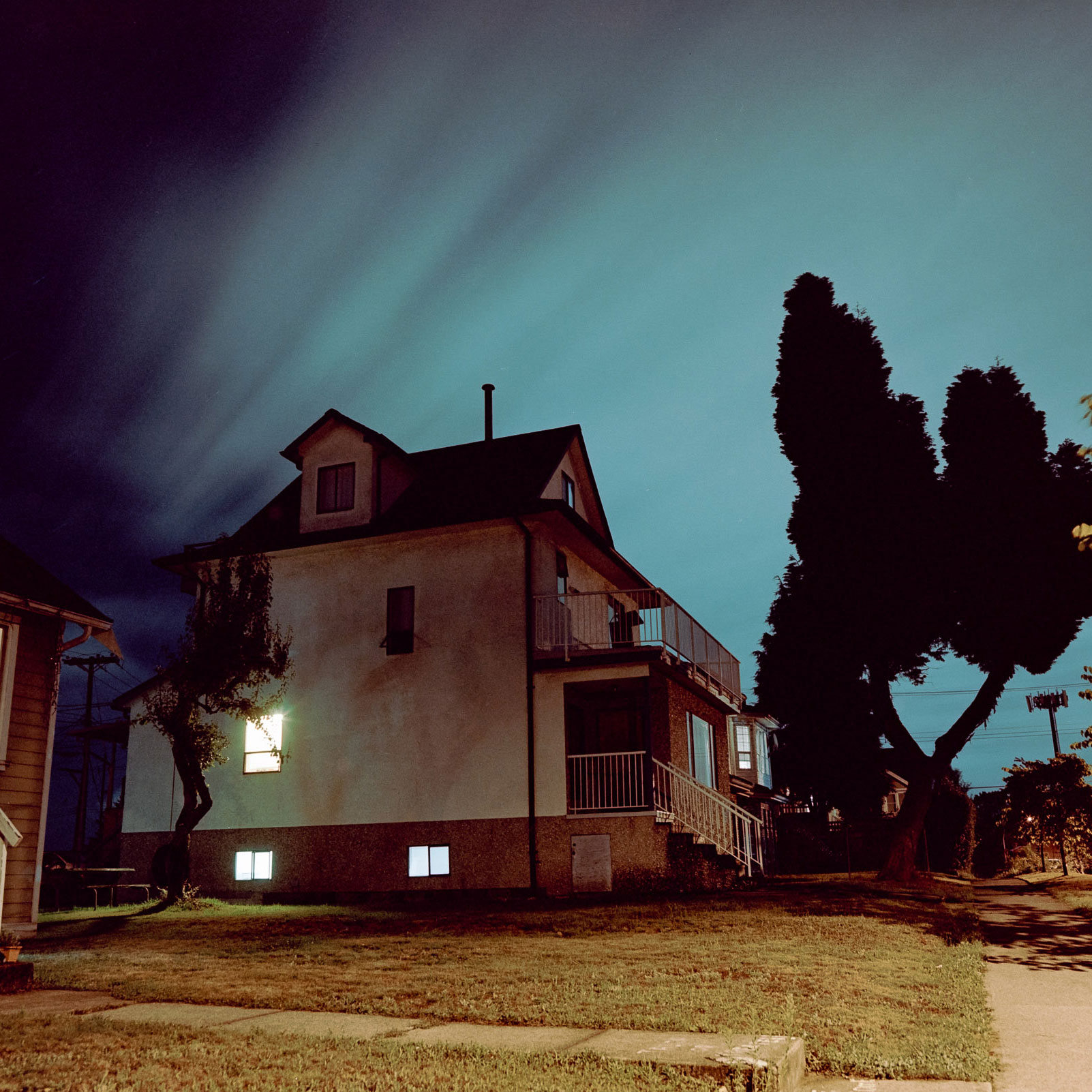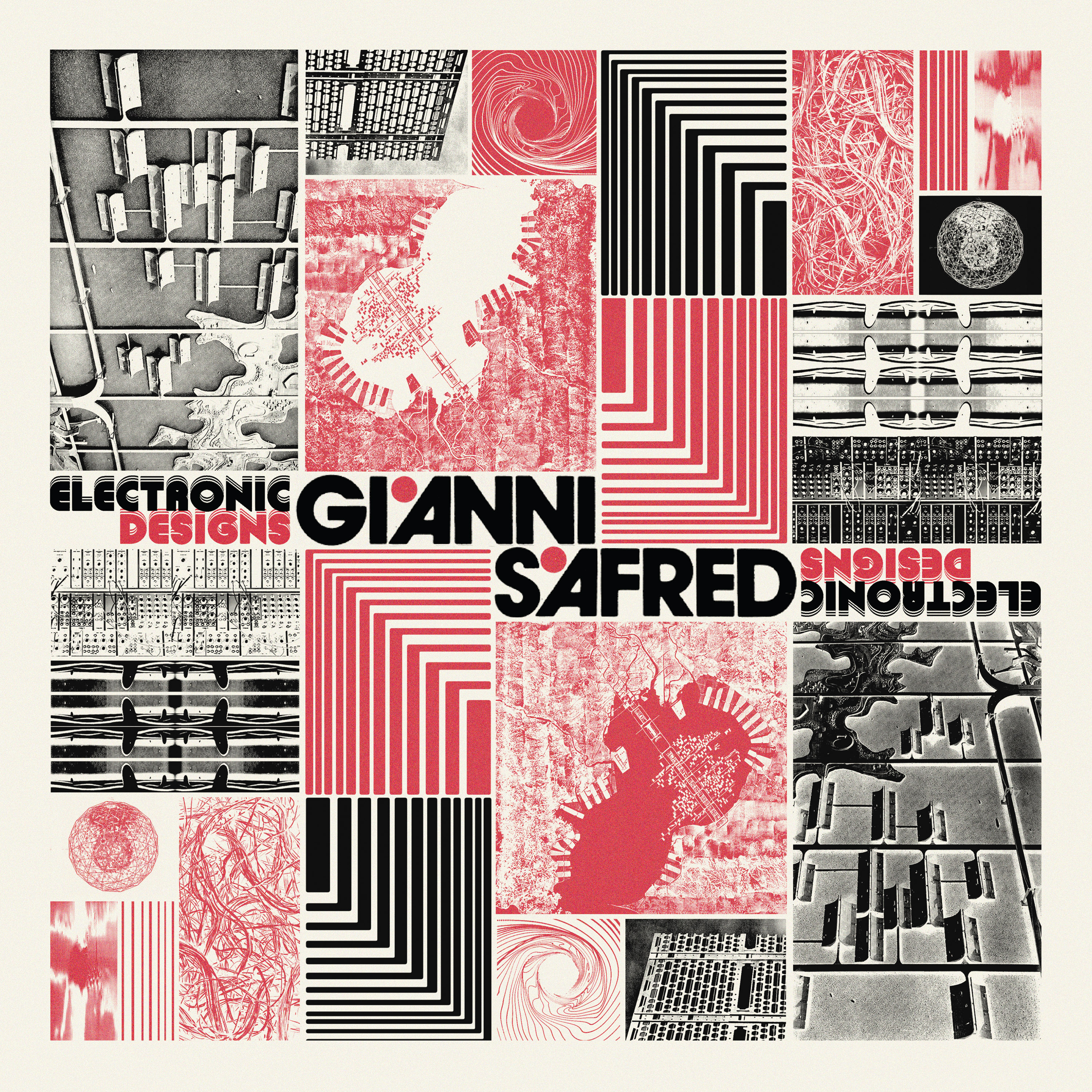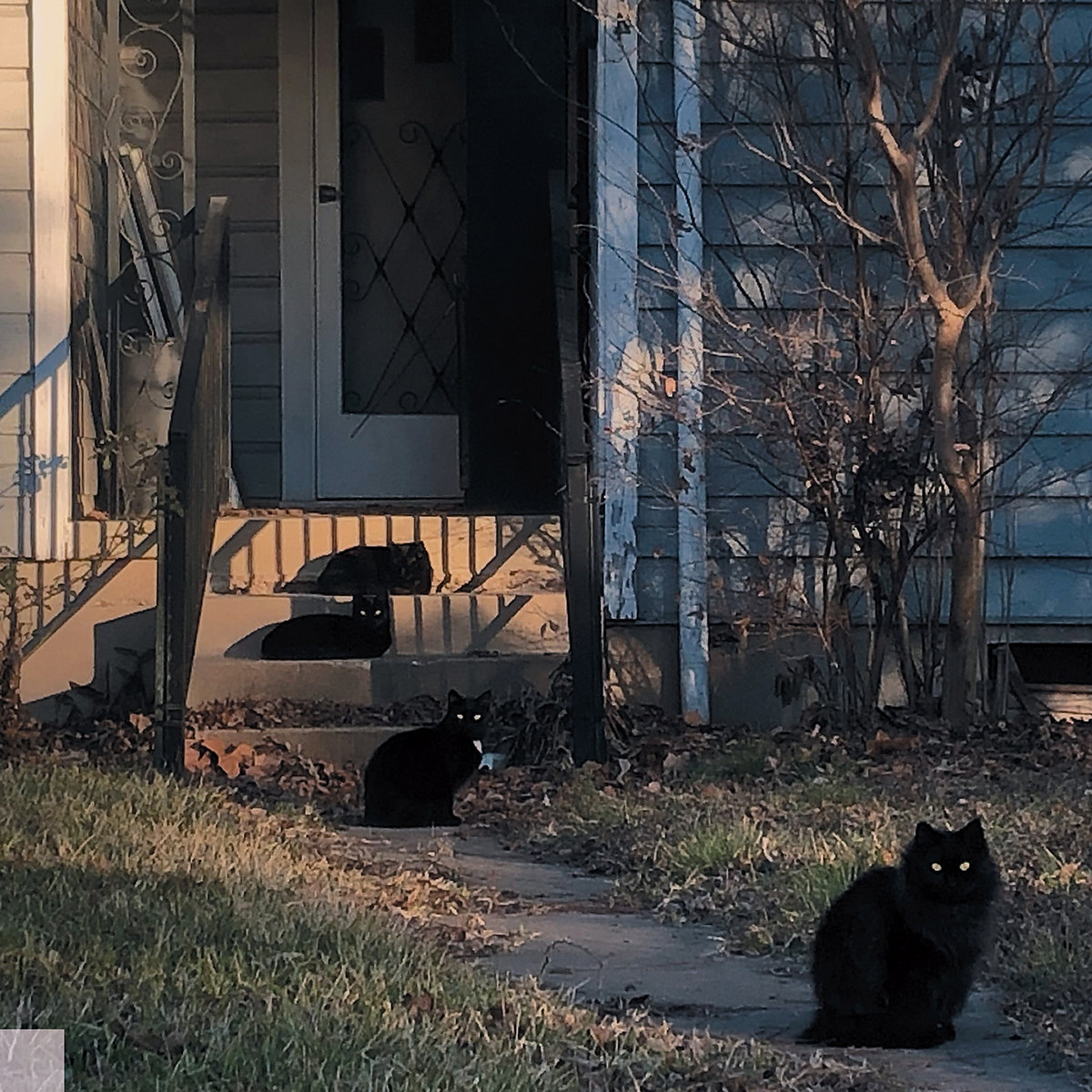 The Heartwood Institute creates memorable hauntological radiophonic doom-synth library folk music wherein traditional instruments from autoharp to zither are warped beyond identification, and blended into a barrage of synths and samplers, with film dialogue and nature sounds sprinkled in. Witchcraft is the subject matter of Pendle, and the album has a suitably spellbinding atmosphere, albeit one with the sense to emphasize grime and poverty. That's not to say there are not layers of sound which suggest cloudy pseudo-romantic myth, misty obscurity, and even smoke billowing up from a hexastein into some corridor of eternal purgatorial uncertainty where no one can hear your appeals for help, your moans or wails.
The Heartwood Institute creates memorable hauntological radiophonic doom-synth library folk music wherein traditional instruments from autoharp to zither are warped beyond identification, and blended into a barrage of synths and samplers, with film dialogue and nature sounds sprinkled in. Witchcraft is the subject matter of Pendle, and the album has a suitably spellbinding atmosphere, albeit one with the sense to emphasize grime and poverty. That's not to say there are not layers of sound which suggest cloudy pseudo-romantic myth, misty obscurity, and even smoke billowing up from a hexastein into some corridor of eternal purgatorial uncertainty where no one can hear your appeals for help, your moans or wails.
Mist Over Pendle is music inspired by the book of that name by Robert Neill and both are depictions of the events around the Pendle witch trials of 1622; amongst the most infamous such trials in English history. The album has an appropriately eerie density. We hear crows cawing, muffled human cries, incantations, repetitive electronic thuds, the occasional eye scratching curse and air cracking screech, foreboding synths, brooks not so much babbling as blabbing confessions during a water boarding session, and snippets of dialogue in archaic dialects lifted from an obscure 1976 television drama The Witches of Pendle.



 Electronic Designs was originally released in 1977 and it retains a weird and wonderful retro-futuristic atmosphere. By turns bizarre and swinging, wild and smooth, these recordings have a depth and an edge not always achieved in so-called library music. Younger glitch merchants can only hope to get close to the swing that Italian master Gianni Safred effortlessly knocks off on "Elastic Points." Then again, he did play with Django Reinhardt. This is a killer release with calculated, almost architectural, quality oozing out of every track. The cosmic melancholy of "Spheres'' is not unlike some of Basil Kirchin's more poignant compositions, such as "I Start Counting" while the frankly stunning "Planetarium" has Safred gradually unleashing an array of textural flourishes, as if imitating meteors or shooting stars amid a galaxy of stars and planets.
Electronic Designs was originally released in 1977 and it retains a weird and wonderful retro-futuristic atmosphere. By turns bizarre and swinging, wild and smooth, these recordings have a depth and an edge not always achieved in so-called library music. Younger glitch merchants can only hope to get close to the swing that Italian master Gianni Safred effortlessly knocks off on "Elastic Points." Then again, he did play with Django Reinhardt. This is a killer release with calculated, almost architectural, quality oozing out of every track. The cosmic melancholy of "Spheres'' is not unlike some of Basil Kirchin's more poignant compositions, such as "I Start Counting" while the frankly stunning "Planetarium" has Safred gradually unleashing an array of textural flourishes, as if imitating meteors or shooting stars amid a galaxy of stars and planets. While I am a fan of both DJ Python (Brian Piñeyro) and Ana Roxanne, a collaboration between the two is not something that I would have ever foreseen happening due to the substantial gulf between their styles. Unusual circumstances can lead to unexpected places, however, and the two mutual admirers found themselves both adrift and living in NYC in 2020 ("well-loved albums aside, no one was playing shows, and a general listlessness and disconnection prevailed"). As a result, the two finally met in person and soon began working on new music together ("studio experimentation was the instinctive extension of a friendship finding its feet"). Before they could finish an album, however, circumstances changed again and Piñeyro returned to the European club scene, while Roxanne toured the world and moved back to California.
While I am a fan of both DJ Python (Brian Piñeyro) and Ana Roxanne, a collaboration between the two is not something that I would have ever foreseen happening due to the substantial gulf between their styles. Unusual circumstances can lead to unexpected places, however, and the two mutual admirers found themselves both adrift and living in NYC in 2020 ("well-loved albums aside, no one was playing shows, and a general listlessness and disconnection prevailed"). As a result, the two finally met in person and soon began working on new music together ("studio experimentation was the instinctive extension of a friendship finding its feet"). Before they could finish an album, however, circumstances changed again and Piñeyro returned to the European club scene, while Roxanne toured the world and moved back to California. One of the reasons I had to investigate this latest album from the always prolific Masami Akita is that I was surprised it took him this long to make a cat themed album. A staunch animal rights activists and composer of many animal themed albums (Chickens! Bears! Dolphins! A whole bunch of other birds!), it took well over 40 years into his career to produce something in respect of the venerable house feline. How much this applies beyond the title and beautiful photography used as packaging is of course questionable, but musically it is Akita at his most diverse.
One of the reasons I had to investigate this latest album from the always prolific Masami Akita is that I was surprised it took him this long to make a cat themed album. A staunch animal rights activists and composer of many animal themed albums (Chickens! Bears! Dolphins! A whole bunch of other birds!), it took well over 40 years into his career to produce something in respect of the venerable house feline. How much this applies beyond the title and beautiful photography used as packaging is of course questionable, but musically it is Akita at his most diverse. This latest collection from Folklore Tapes borrows its title from a Japanese proverb about knowing one's limitations ("the frog in the well knows nothing of the sea"), which was itself borrowed from a Chinese fable. In the context of an album devoted to UFO lore, of course, humans are the frogs, the infinite universe is the ocean, and the usual eclectic Folklore Tapes cast of characters gleefully devote themselves to celebrating the colorful hoaxes and stories of their countrymen who claim to have experienced a visit from extraterrestrial life. While alien visitations are admittedly a bit outside the usual realm of Folklore Tapes' research, I would be hard pressed to think of a roster of artists better suited to tackle the topic, as just about everyone involved brings a freewheeling playfulness to the theme and surprises abound. This is yet another characteristically brilliant and inspired compilation from the inimitable Folklore Tapes. Hell, it might even be their best yet.
This latest collection from Folklore Tapes borrows its title from a Japanese proverb about knowing one's limitations ("the frog in the well knows nothing of the sea"), which was itself borrowed from a Chinese fable. In the context of an album devoted to UFO lore, of course, humans are the frogs, the infinite universe is the ocean, and the usual eclectic Folklore Tapes cast of characters gleefully devote themselves to celebrating the colorful hoaxes and stories of their countrymen who claim to have experienced a visit from extraterrestrial life. While alien visitations are admittedly a bit outside the usual realm of Folklore Tapes' research, I would be hard pressed to think of a roster of artists better suited to tackle the topic, as just about everyone involved brings a freewheeling playfulness to the theme and surprises abound. This is yet another characteristically brilliant and inspired compilation from the inimitable Folklore Tapes. Hell, it might even be their best yet. Like 2021's Four Lies in the Eavesdrop Business, composer/multi-instrumentalist Matt Weston's latest work is a lengthy double record. However, this time he specifically utilizes the format to create four side-long and expansive pieces that constantly develop, bringing in a multitude of different sounds and elements. The result is a series of intense, dense compositions that can be hard to keep up with at first, but eventually reveal a deep sense of complexity in their structures.
Like 2021's Four Lies in the Eavesdrop Business, composer/multi-instrumentalist Matt Weston's latest work is a lengthy double record. However, this time he specifically utilizes the format to create four side-long and expansive pieces that constantly develop, bringing in a multitude of different sounds and elements. The result is a series of intense, dense compositions that can be hard to keep up with at first, but eventually reveal a deep sense of complexity in their structures. As Alter's album description insightfully observes, a collaboration between these two Editions Mego alumnae "somehow seemed inevitable," yet I was still pleasantly surprised at how seamlessly Lewis and Void were able to combine their visions into something that feels both new and wonderful. On one level, the success of this union makes perfect sense, as both artists tend to turn out some of their strongest work in collaborative situations (Carter Tutti Void and Lewis's KLMNOPQ EP with Peder Mannerfelt being prime examples of that phenomenon). However, both artists excel in extremely specific realms that have some limitations: Lewis is exceptionally good at collaging non-musical sounds, while Void seems particularly adept at crafting eccentric noise-damaged techno.
As Alter's album description insightfully observes, a collaboration between these two Editions Mego alumnae "somehow seemed inevitable," yet I was still pleasantly surprised at how seamlessly Lewis and Void were able to combine their visions into something that feels both new and wonderful. On one level, the success of this union makes perfect sense, as both artists tend to turn out some of their strongest work in collaborative situations (Carter Tutti Void and Lewis's KLMNOPQ EP with Peder Mannerfelt being prime examples of that phenomenon). However, both artists excel in extremely specific realms that have some limitations: Lewis is exceptionally good at collaging non-musical sounds, while Void seems particularly adept at crafting eccentric noise-damaged techno.  This latest album from Barbieri is intended as a sister album to 2019's landmark Ecstatic Computation and has been released to correspond with the imminent reissue of the latter. The central difference between the two albums is that Myuthafoo gradually and organically took shape during Barbieri's extensive touring, as the "nomadic, interactive energy" of those many live dates inspired her to play with experimental variations in her process each night. More specifically, she would program patterns into her sequencer, then feed them into her "arsenal of noise generators" to explore different combinations and the most compelling results were set aside for future expansion and/or eventual release.
This latest album from Barbieri is intended as a sister album to 2019's landmark Ecstatic Computation and has been released to correspond with the imminent reissue of the latter. The central difference between the two albums is that Myuthafoo gradually and organically took shape during Barbieri's extensive touring, as the "nomadic, interactive energy" of those many live dates inspired her to play with experimental variations in her process each night. More specifically, she would program patterns into her sequencer, then feed them into her "arsenal of noise generators" to explore different combinations and the most compelling results were set aside for future expansion and/or eventual release.  Matthew Cooper's newest Eluvium album is apparently inspired by two works of poetic literature by T.S.Eliot and Richard Brautigan. That's easier said than done, of course, and equally unclear is how Cooper has changed his compositional methodology because of a debilitating medical problem with his left shoulder and arm. It is hard to decipher exactly what is meant by, to paraphrase, blending electronic automations with traditional songwriting and using algorithms to extract from several years of notebook scribble. Perhaps this means he has worked in cyborgian harmony with machines, which would fit with the Brautigan reference point of All Watched Over By Machines Of Loving Grace.
Matthew Cooper's newest Eluvium album is apparently inspired by two works of poetic literature by T.S.Eliot and Richard Brautigan. That's easier said than done, of course, and equally unclear is how Cooper has changed his compositional methodology because of a debilitating medical problem with his left shoulder and arm. It is hard to decipher exactly what is meant by, to paraphrase, blending electronic automations with traditional songwriting and using algorithms to extract from several years of notebook scribble. Perhaps this means he has worked in cyborgian harmony with machines, which would fit with the Brautigan reference point of All Watched Over By Machines Of Loving Grace. Emahoy Tsege Mariam Gebru passed on early this year, but not before this album was released to celebrate her 99th birthday. It collects pieces originally issued in 1972 as Song of Jerusalem, including the stunning title track and "Quand La Mer Furieuse" in which Gebru sings; a moment which probably should not draw parallels with "Garbo Talks!" (when the speaking voice of that star of silent films first shocked audiences to sleep) but is as startlingly beautiful as you might expect if you have heard her play her compositions for piano at all. These she does in a manner impossible to hear without feeling as if the sun has come out from behind a cloud and is gently warming the side of your face. Reach for adjectives and terms such as liturgical, classical, homemade, and heavenly, but the key word is definitely "transcendent."
Emahoy Tsege Mariam Gebru passed on early this year, but not before this album was released to celebrate her 99th birthday. It collects pieces originally issued in 1972 as Song of Jerusalem, including the stunning title track and "Quand La Mer Furieuse" in which Gebru sings; a moment which probably should not draw parallels with "Garbo Talks!" (when the speaking voice of that star of silent films first shocked audiences to sleep) but is as startlingly beautiful as you might expect if you have heard her play her compositions for piano at all. These she does in a manner impossible to hear without feeling as if the sun has come out from behind a cloud and is gently warming the side of your face. Reach for adjectives and terms such as liturgical, classical, homemade, and heavenly, but the key word is definitely "transcendent."